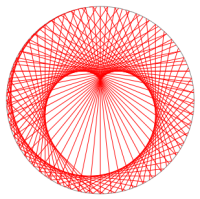Leetcode Contest 37
第一题Maximum Distance in Arrays
对于第i数组中,取出最大值a,最小值b,然后将(a, i)和(b, i)放进一个数组m里。将数组m按照第一个分量排序,那么对我们有用的只是数组m前面两个元素和后面两个元素。如果第一个元素和最后一个元素来自不一样的数组(第二个分量不一样),那么答案就是这两个元素的第一个分量的差。否则,我们要比较两种情况:第一个元素与倒数第二个元素,第二个元素与最后一个元素。
class Solution(object):
def maxDistance(self, arrays):
"""
:type arrays: List[List[int]]
:rtype: int
"""
m = []
for i, a in enumerate(arrays):
m.append((a[0], i))
m.append((a[-1], i))
m.sort(key=lambda x: x[0])
if m[0][1]!=m[-1][1]:
return m[-1][0]-m[0][0]
return max(m[-2][0]-m[0][0], m[-1][0]-m[1][0])
第二题Add One Row to Tree
简单的DFS。
# Definition for a binary tree node.
# class TreeNode(object):
# def __init__(self, x):
# self.val = x
# self.left = None
# self.right = None
class Solution(object):
def addOneRow(self, root, v, d):
"""
:type root: TreeNode
:type v: int
:type d: int
:rtype: TreeNode
"""
if d==1:
ans = TreeNode(v)
ans.left = root
return ans
def dfs(root, h):
if not root:
return
if h==d-1:
t = TreeNode(v)
t.left = root.left
root.left = t
t = TreeNode(v)
t.right = root.right
root.right = t
else:
dfs(root.left, h+1)
dfs(root.right, h+1)
dfs(root, 1)
return root
第三题Minimum Factorization
从题目可以知道我们尝试的因子只有从2到9。因为我们希望b最小,所以我们要从9到2递减尝试。需要注意边界情况。
class Solution(object):
def smallestFactorization(self, a):
"""
:type a: int
:rtype: int
"""
ans = ''
for i in xrange(9, 1, -1):
t = 0
while a%i==0:
t += 1
a /= i
ans = str(i)*t + ans
ans = int(ans) if ans else 1
ans = ans if ans < 2**31 and a==1 else 0
return ans
第四题Task Scheduler
因为相同的任务之间需要相隔n个单位的时间,所以我们可以每次考虑往长度为(n+1)的时间段。首先统计出现次数最多的字母的次数m,那么我们至少需要(m-1)个长度为(n+1)的时间段,在最后那段我们只需要长度为t的时间段,其中t是出线次数为m的字母的总数。根据以上分析,我们至少需要的时间为
但是(m-1)(n+1)+t有可能小于len(tasks),答案应该是两者中最大值。
class Solution(object):
def leastInterval(self, tasks, n):
"""
:type tasks: List[str]
:type n: int
:rtype: int
"""
cnt = [0] * 26
for t in tasks:
cnt[ord(t)-ord('A')] += 1
cnt.sort(key=lambda x:-x)
t = 1
for i in xrange(1, 26):
if cnt[i]==cnt[0]:
t += 1
return max((cnt[0]-1)*(n+1)+t, len(tasks))
